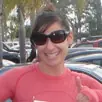6. B - False. Although the heart does pump 2,000 gallons of blood daily, your eyes are actually the most active muscle. The eye consists of many different small muscles and moves over 100,000 times per day. Your pupils constantly are opening and closin, kind of like a camera lens. Another fun fact: most of the movement occurs while you sleep.
7. A - True. Your abdominal muscles include: the Rectus Abdominus, Internal and External Obliques, and Transverse Abdominus. The Rectus Abdominus are thin bands of tissue to give off the "six-pack" look. Internal and External Obliques are your oblique muscles; the side of your abs. Transverse Abdominus is the deepest layer of the abdominal group. It's underneath the other muscles and wraps around the abdominal area, think of it as a corset. This helps you expand your belly while breathing and stabilizes your spine.
More: Top 3 Core Exercises From the World's Fittest Man
8. C - Quadriceps. Vastus Intermedius, Lateralis, Medialis and Rectus Femoris are muscles that make up the quadriceps. The quadriceps helps to straighten the knee.
Lunges are great to work out the quadriceps muscle.
9. A - True. Tight hip flexors can cause the pelvis to tilt forward, which results in lower back pain. To decrease lower back pain, strengthen your abdominal muscles and stretch the hip flexor.
Runners lunge will help stretch the hip flexors and plank pose can strengthen the abs.
More: Pose of the Month: Squat Pose
10. B - False. Believe it or not, the human body has about 650 muscles. Muscles are made from fibers that enable the body to move. There are three types of muscle groups: Skeletal, Smooth and Cardiac. Skeletal muscles move your bones; you can see and feel the skeletal muscles. You have to think about what you want to move in order to move that muscle—it's a voluntary movement. Smooth muscles are found in the internal organs: blood, bladder, digestive system, airways and uterus. The movement is involuntary; you don't have to think about the movement for it to happen. The Cardiac muscles are found in your heart. Cardiac muscle movement is involuntary and is a twitch muscle.
If you scored:
9 to 10: You get bragging rights. Congrats, you really know how the human body works and understand what stretches or exercises need to be done to strengthen and recover your muscles.
 Use your knowledge to train for your next race.
Use your knowledge to train for your next race.
6 to 8: You didn't fail. You understand the gist of the human body, but want to learn more. You know major muscle groups, which can help you create workouts and perform stronger.
 Need an extra push to perform your best? Find a fitness class to reach your goals.
Need an extra push to perform your best? Find a fitness class to reach your goals.
Below 5: Well, there are about 650 muscles in the human body. That's a lot to understand, but learn the basic human anatomy to help you perform your best.
 Get a little extra help with a training plan to reach your goals.
Get a little extra help with a training plan to reach your goals.
 Sign up for a fitness class.
Sign up for a fitness class.



